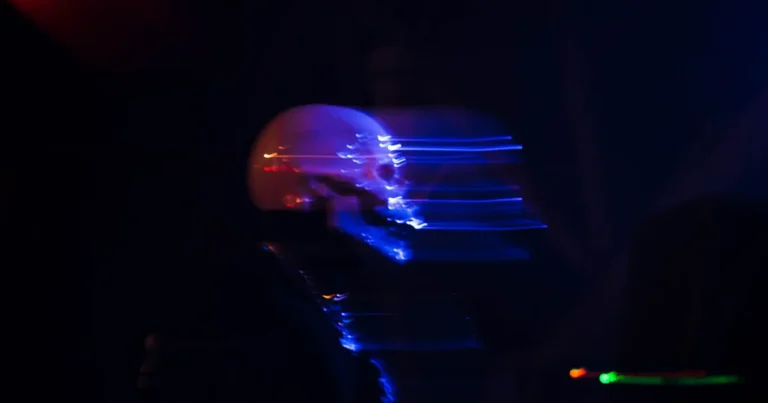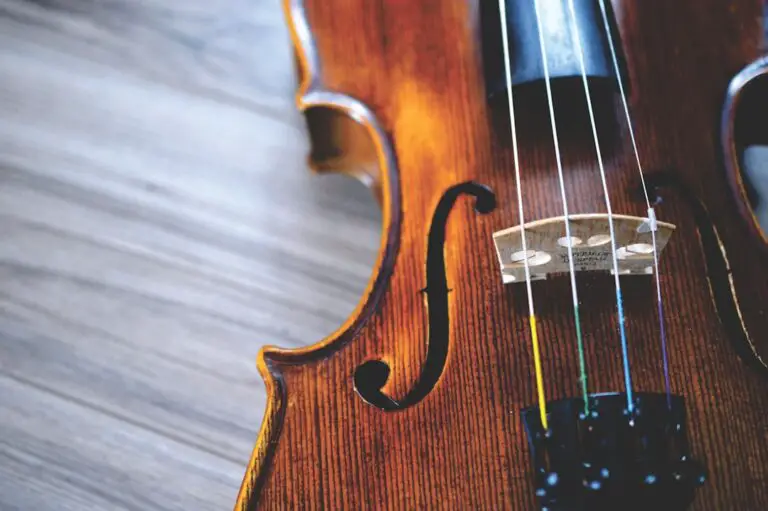Support our educational content for free when you purchase through links on our site. Learn more
Peter Gabriel – Sledgehammer: 7 Secrets Behind the Iconic Hit ⚒️ (2025)
When you hear the first funky horn blast of Peter Gabriel’s “Sledgehammer,” it’s impossible not to move. But did you know this 1986 smash wasn’t just a chart-topping single—it was a revolution in music production, video innovation, and pop culture? From the painstaking stop-motion animation that took Gabriel 16 hours under glass to the cutting-edge synths that shaped its sound, this song smashed expectations and redefined what a music video could be.
Stick around as we unpack the 7 secrets that made “Sledgehammer” a timeless classic, including the legendary musicians behind the scenes, the groundbreaking video techniques, and why this song still packs a punch on dance floors and playlists nearly four decades later. Plus, we’ll reveal how the horn section’s soulful blast and synth wizardry combined to create one of the most infectious grooves in 80s synth pop history. Ready to wield your own sonic sledgehammer? Let’s dive in!
Key Takeaways
- “Sledgehammer” fused funk, soul, and synth pop with live horns and cutting-edge 80s synths like the Prophet-5 and E-mu Emulator II sampler.
- The music video’s stop-motion animation, created with Aardman Animations, won a record nine MTV Video Music Awards and revolutionized music visuals.
- Peter Gabriel’s collaboration with top session musicians like Tony Levin and Manu Katché gave the track its irresistible groove.
- The song topped charts worldwide, knocking out his former band Genesis and cementing Gabriel’s solo superstardom.
- Its legacy lives on through covers, parodies, and continued influence on synth pop and music video artistry.
👉 Shop iconic synth gear and vintage instruments inspired by “Sledgehammer”:
- Sequential Circuits Prophet-5 Synthesizer: Amazon | Sequential Official Website
- E-mu Emulator II Sampler: Amazon | Vintage Synth Explorer
- Music Man Sabre Bass: Amazon | Music Man Official
Table of Contents
- ⚡️ Quick Tips and Facts
- 🔨 The Genesis of a Giant: Peter Gabriel’s “Sledgehammer” Story
- 🎬 The Visual Revolution: Decoding the “Sledgehammer” Music Video
- 🎤 Beyond the Beat: Unpacking the Lyrics and Themes of “Sledgehammer”
- 📈 “Sledgehammer” on the Charts: A Global Phenomenon
- 🎸 Live and Legendary: “Sledgehammer” in Concert
- 🌟 The “Sledgehammer” Legacy: Influence and Enduring Impact
- 👥 Personnel Power: Who Played What on This Masterpiece?
- 🤔 Conclusion: Why “Sledgehammer” Still Hits Hard After All These Years
- 🔗 Recommended Links
- ❓ FAQ: Your Burning “Sledgehammer” Questions Answered
- 📚 Reference Links
Here at Synth Pop™, we’ve spent countless nights debating the Mount Rushmore of 80s music videos. It’s a fierce battle, but one face is always carved in stone: Peter Gabriel’s. And the song that blasted him into the stratosphere? The one, the only, “Sledgehammer.” This isn’t just a song; it’s a cultural event, a sonic boom wrapped in a visual masterpiece. We’re going to break down every nut, bolt, and dancing chicken of this iconic track.
So, are you ready to get your fruit and veg moving? Let’s dive in!
⚡️ Quick Tips and Facts
Before we get into the nitty-gritty, here’s a quick-fire round of everything you need to know about this absolute banger.
| Fact | Details |
|---|---|
| Artist | Peter Gabriel |
| Album | So (1986) |
| Released | 25 April 1986 |
| Genre | Dance-rock, Funk rock, Blue-eyed soul, New wave. |
| Producers | Daniel Lanois, Peter Gabriel. |
| Key Instruments | Sequential Circuits Prophet-5, E-mu Emulator II, Music Man Sabre Bass, Live Horn Section. |
| Chart Performance | #1 in USA & Canada, #4 in the UK. |
| Fun Fact | The music video won a record nine MTV Video Music Awards in 1987. 🏆 |
| Legacy | According to Time magazine, it’s the most played music video in the history of MTV. |
🔨 The Genesis of a Giant: Peter Gabriel’s “Sledgehammer” Story
Every masterpiece has an origin story, and “Sledgehammer” is no exception. To truly get it, you have to understand the creative volcano that was Peter Gabriel in the mid-80s. This wasn’t just another track on an album; it was a declaration.
From So to Superstar: The Album’s Context and Creative Spark
By 1986, Peter Gabriel was already a critical darling, known for his art-rock explorations post-Genesis. But he wasn’t yet a global pop superstar. The album So changed everything. It was the perfect fusion of his experimental tendencies with undeniable pop sensibilities. “Sledgehammer” was the lead single, a bold choice that signaled a new, more accessible, and outrageously fun direction. It was a gamble that paid off, turning Gabriel into a household name and a cornerstone of 80s Synth Pop.
The song famously knocked “Invisible Touch,” by his former band Genesis, off the #1 spot on the Billboard Hot 100. Talk about a plot twist! It was a symbolic passing of the torch, proving that Gabriel’s innovative solo path was leading him to even greater heights.
Crafting the Catchy: Songwriting, Production Secrets, and the Horn Section’s Magic
So, how did they bottle this lightning? Gabriel and co-producer Daniel Lanois were chasing a specific vibe: the raw, infectious energy of 60s soul music from labels like Stax Records and Atlantic Records.
- The Horns of Heaven: Gabriel knew that to get that authentic soul sound, synthesizers just wouldn’t cut it. He needed the real deal. Enter the legendary Wayne Jackson of the Memphis Horns on trumpet, joined by Mark Rivera on sax and Don Mikkelsen on trombone. The result is that iconic, punchy brass riff that kicks the song into high gear.
- Synth Wizardry: Don’t worry, there’s plenty of synth goodness here! That unforgettable opening flute sound? It’s not a real shakuhachi flute. It’s a sample played on a cutting-edge (and wildly expensive at the time) E-mu Emulator II sampler. The “cheap organ sound” that gives the riff its body comes from a Sequential Circuits Prophet-5, doubled with the horns to create a sound that’s both organic and otherworldly.
- The Rhythm Section: The foundation of this funk-rock behemoth is the powerhouse duo of Manu Katché on drums and the one-and-only Tony Levin on bass. Katché reportedly nailed his drum track in a single take! Levin, a true innovator, used a fretless Music Man bass with a pick and an octave pedal, giving the bassline its signature synth-like growl and funky precision.
✅ The takeaway? “Sledgehammer” is a masterclass in blending old-school soul with futuristic pop production, a key reason it’s considered one of the most Iconic Synth Pop Songs.
🎬 The Visual Revolution: Decoding the “Sledgehammer” Music Video
Let’s be honest: you can’t talk about “Sledgehammer” without seeing dancing chickens and a face made of fruit in your mind’s eye. The music video, directed by Stephen R. Johnson, wasn’t just a promo clip; it was a groundbreaking piece of art that changed the game forever.
A Stop-Motion Masterpiece: Techniques, Innovation, and the Aardman Connection
The video is a tour de force of animation techniques, primarily pixilation (a stop-motion technique using live actors) and clay animation. To bring this vision to life, the team enlisted the help of animation wizards, including the then-up-and-coming Aardman Animations (yes, the future creators of Wallace and Gromit!) and the surrealist duo, the Brothers Quay.
Nick Park of Aardman was the genius behind the dancing oven-ready chickens during the flute solo. It was this kind of quirky, unforgettable imagery that made the video an instant classic.
Behind the Scenes: The Grueling Yet Glorious Making of an Icon
Creating this masterpiece was no walk in the park. Peter Gabriel’s commitment was legendary. For one shot, he lay under a sheet of glass for 16 hours while animators moved fruit, vegetables, and other objects around on top of him, frame by painstaking frame.
Gabriel himself said, “It took a lot of hard work… I was thinking at the time, ‘If anyone wants to try and copy this video, good luck to them.'” He wasn’t wrong! The sheer effort involved was monumental.
MTV’s Reign: How the Video Conquered the Airwaves and Defined an Era
When “Sledgehammer” hit MTV, it was an explosion. It was weird, it was wonderful, and it was unlike anything anyone had ever seen. It went into heavy rotation and became an absolute phenomenon.
- Award Overload: It swept the 1987 MTV Video Music Awards, winning a staggering nine awards, a record that still stands.
- All-Time Great: It’s consistently ranked among the greatest music videos ever made, with MTV declaring it their number one animated video of all time.
- Global Reach: The video was so powerful it was even broadcast in the Soviet Union, India, and China.
The official HD version of the video, which you can see in the first YouTube video embedded above, has been beautifully remastered in 4K, ensuring its visual brilliance can be appreciated by new generations.
🎤 Beyond the Beat: Unpacking the Lyrics and Themes of “Sledgehammer”
Okay, so the music is infectious and the video is iconic, but what is Peter Gabriel actually singing about? Let’s grab our lyrical magnifying glass.
Metaphors and Meanings: What is Peter Gabriel Really Saying?
On the surface, “Sledgehammer” is a joyous, bombastic song filled with playful, if slightly suggestive, innuendo. Lines like “I wanna be your sledgehammer” and “you could have a steam train” aren’t exactly subtle, are they? 😉 It’s a celebration of connection, desire, and breaking down barriers.
However, some critics, like Ethan Hein, argue that in a danceable pop song like this, the lyrics are almost secondary. He suggests the words were “chosen more on the basis of their sound than their content.” It’s a valid point. The song is a “delivery vehicle for rhythm,” and the vocals are just another percussive, melodic layer in the dense, funky mix.
❌ Is it a deep, poetic masterpiece? Maybe not.
✅ Is it a ridiculously fun and clever set of lyrics that perfectly match the song’s energy? Absolutely.
The Horns, the Hooks, the Heart: A Deep Dive into the Musicality
Musically, this song is a Swiss watch of pop perfection. The structure is fascinating. As Ethan Hein’s analysis points out, Gabriel makes you wait a surprisingly long time—until about 1:56—for the actual chorus! Why does it work? Because, as Hein says, “he’s hit you with two killer hooks already: the horn riff in the intro and the verse melody, both of which are stronger than most people’s choruses.”
The song grooves on a static E-flat Mixolydian mode during the verses, giving it that funky, hypnotic feel before a dramatic chord change lifts you into the pre-chorus. The track ends not with a fade on the chorus, but with what co-producer Daniel Lanois called a “crazy party ending”—an extended jam session with a three-way call and response between Gabriel, the female backing vocalists (the brilliant P. P. Arnold, Coral Gordon, and Dee Lewis), and the horns. It was a spontaneous jam that became Lanois’s favorite part of the song.
📈 “Sledgehammer” on the Charts: A Global Phenomenon
The infectious groove and mind-bending video were a combination the world couldn’t resist. “Sledgehammer” didn’t just climb the charts; it took a sledgehammer to them.
Breaking Records: Chart Performance and Milestones Worldwide
Here’s a look at its incredible run:
- 🇨🇦 Canada: A massive hit, holding the #1 spot for four weeks.
- 🇺🇸 United States: Reached #1 on the Billboard Hot 100 on July 26, 1986. It also topped the Mainstream Rock and Dance Club Songs charts.
- 🇬🇧 United Kingdom: Peaked at #4 on the UK Singles Chart, tying with “Games Without Frontiers” as his biggest home-turf hit.
- 🌍 Around the World: It was a Top 10 hit in numerous other countries, cementing Gabriel’s status as a global superstar.
Gold, Platinum, and Beyond: Certifications and Sales Success
While the single itself earned certifications, its true sales power was as the flagship of the album So. The album went on to sell millions of copies worldwide, achieving 5x Platinum status in the US and 3x Platinum in the UK, thanks in large part to the massive success of “Sledgehammer.”
Listen to the album So on: Amazon Music | Apple Music
🎸 Live and Legendary: “Sledgehammer” in Concert
A song this vibrant and energetic was destined to be a showstopper in a live setting. And for decades, it has been exactly that.
Iconic Performances: Reliving the Magic on Stage
From the So tour in the 80s to his more recent outings, “Sledgehammer” is a perennial highlight of a Peter Gabriel concert. The live versions often extend the “crazy party ending,” allowing the band to jam and the audience to dance. The interplay between Gabriel and his backing singers, combined with a full, blaring horn section, brings an electricity to the song that even the flawless studio version can’t quite capture. It’s a moment of pure, communal joy.
Evolving Interpretations: How the Song Lives On in Live Shows
While the core of the song remains the same, Gabriel has never been one to rest on his laurels. Over the years, the live arrangements have subtly shifted, reflecting the musicians he’s playing with and his own artistic evolution. Yet, the central, funky soul of the song is untouchable. It’s a testament to the strength of the songwriting that it can be reinterpreted but never loses its power to make a crowd move.
🌟 The “Sledgehammer” Legacy: Influence and Enduring Impact
Decades after it smashed its way onto the scene, “Sledgehammer” remains a cultural touchstone. Its influence is felt across music, television, and film.
Inspiring a Generation: Its Place in Pop Culture and Music History
The song’s blend of genres—funk, soul, rock, and pop—paved the way for other artists to experiment with similar fusions. But its biggest impact was undoubtedly visual. The “Sledgehammer” video raised the bar for what a music video could be, transforming it from a simple marketing tool into a legitimate art form. Countless directors and artists have cited it as a major inspiration for their own work. It proved that creativity and commercial success could go hand-in-hand.
Covers, Parodies, and Tributes: The Song’s Enduring Appeal and Homages
A true sign of a song’s iconic status is how often it’s referenced, parodied, and covered by others.
- Parody King: The one and only “Weird Al” Yankovic included a snippet of the song in his “Polka Party!” medley, a rite of passage for any major 80s hit.
- Modern Tributes: More recently, blues-rock duo Larkin Poe released a fantastic cover, showing their admiration for the original. In their post about the cover, they celebrated the song’s chart success and its multiple VMA wins. It’s a perfect example of how “Sledgehammer” continues to inspire musicians today.
👥 Personnel Power: Who Played What on This Masterpiece?
It takes a village to raise a classic. Here are the incredible musicians who brought “Sledgehammer” to life.
| Musician | Instrument/Role |
|---|---|
| Peter Gabriel | Lead Vocals, Fairlight CMI, Prophet-5 |
| Tony Levin | Bass Guitar |
| Manu Katché | Drums |
| David Rhodes | Guitar |
| Daniel Lanois | Guitar |
| Wayne Jackson | Trumpet |
| Mark Rivera | Tenor Saxophone |
| Don Mikkelsen | Trombone |
| P. P. Arnold | Backing Vocals |
| Coral Gordon | Backing Vocals |
| Dee Lewis | Backing Vocals |
🤔 Conclusion: Why “Sledgehammer” Still Hits Hard After All These Years
So, what makes Peter Gabriel’s “Sledgehammer” such an enduring titan in the world of synth pop and beyond? After peeling back the layers of its infectious groove, groundbreaking video, and masterful production, it’s clear that this song is a perfect storm of creativity, innovation, and pure fun.
✅ Positives:
- A genre-blending masterpiece that fuses funk, soul, rock, and synth pop with impeccable musicianship.
- A revolutionary music video that set new standards for visual storytelling and animation in music.
- Top-tier production featuring legendary session musicians and cutting-edge synth technology of the 1980s.
- A song that connects emotionally and physically — it makes you think and dance simultaneously.
- A legacy that continues to inspire musicians and artists decades later.
❌ Negatives:
- The lyrics, while catchy and playful, are not deeply poetic or narrative-driven, which may disappoint those seeking profound storytelling.
- Some purists might argue the heavy production dilutes the rawness of Gabriel’s earlier work.
But here’s the thing: “Sledgehammer” was never meant to be a somber ballad or a cryptic art piece. It’s a joyous celebration of rhythm, sound, and visual spectacle. It’s a sledgehammer blow to the ordinary — a song and video that demanded attention and changed the game.
If you’re a fan of 80s synth pop, funk-infused rock, or pioneering music videos, “Sledgehammer” is an essential listen and watch. It’s a timeless classic that still packs a punch and will continue to do so for generations to come.
🔗 Recommended Links
Ready to dive deeper or relive the magic? Check out these essential products and resources related to “Sledgehammer” and its iconic sound:
-
Sequential Circuits Prophet-5 Synthesizer:
Amazon | Sequential Official Website -
E-mu Emulator II Sampler:
Vintage Synth Explorer | Amazon Search -
Music Man Sabre Fretless Bass:
Ernie Ball Music Man Official | Amazon Search -
Books on Peter Gabriel and 80s Music:
-
Watch Larkin Poe’s Cover of “Sledgehammer”:
Facebook Post
❓ FAQ: Your Burning “Sledgehammer” Questions Answered
What is the meaning behind Peter Gabriel’s “Sledgehammer”?
Peter Gabriel’s “Sledgehammer” is a playful, metaphor-rich song that uses the imagery of a sledgehammer to express desire, connection, and breaking down emotional barriers. While the lyrics are fun and suggestive, they were chosen more for their rhythmic and sonic qualities than deep narrative meaning. The song celebrates energy and movement, aligning perfectly with its funky, danceable groove.
Read more about “What Made Peter Gabriel Famous? 🎤 30 Reasons You Can’t Ignore (2025)”
How did “Sledgehammer” influence synth pop music in the 1980s?
While “Sledgehammer” is often classified as dance-rock or funk rock, its innovative use of synthesizers like the Prophet-5 and the E-mu Emulator II sampler helped bridge the gap between traditional instrumentation and synth-based production. It showed that synths could coexist with live horns and organic rhythm sections, influencing synth pop artists to experiment with hybrid sounds. The song’s success also demonstrated that synth-driven music could achieve mainstream chart dominance.
What synthesizers were used in Peter Gabriel’s “Sledgehammer”?
The key synthesizers featured include the Sequential Circuits Prophet-5, which provided the distinctive organ-like riff, and the E-mu Emulator II, which was used to sample the shakuhachi flute sound heard in the intro. Additionally, the Fairlight CMI was employed for digital sampling and some keyboard parts. These synths were cutting-edge technology in the mid-1980s, contributing to the song’s futuristic yet soulful sound.
Read more about “Peter Gabriel: 15 Must-Know Facts & Hits That Shaped Synth Pop (2025) 🎤”
Why is the music video for “Sledgehammer” considered iconic in synth pop culture?
The “Sledgehammer” video is a landmark in music video history due to its pioneering use of stop-motion animation, claymation, and pixilation, combined with surreal and whimsical imagery. Created with the help of Aardman Animations and the Brothers Quay, it pushed the boundaries of what a music video could be—an art form, not just a promotional tool. Its record-breaking nine MTV Video Music Awards and continued acclaim cement its status as a cultural and visual icon of the 80s synth pop era.
How does “Sledgehammer” compare to other synth pop hits of the 1980s?
Unlike many synth pop hits that rely heavily on synthesized sounds and drum machines, “Sledgehammer” blends live instrumentation, especially a real horn section, with synth textures. This hybrid approach gives it a warmer, funkier feel compared to the often colder, more electronic sound of contemporaries like Depeche Mode or New Order. Its complex production and genre fusion make it stand out as a unique and influential track within the synth pop and broader 80s pop landscape.
What role did Peter Gabriel play in the development of synth pop music?
Peter Gabriel was a pioneer in integrating electronic instruments and sampling technology into mainstream pop music. His willingness to experiment with synthesizers, digital samplers, and innovative production techniques helped expand the sonic palette of synth pop. While not exclusively a synth pop artist, his work on So and tracks like “Sledgehammer” influenced many synth pop musicians by demonstrating how electronic and organic sounds could coexist creatively.
Can “Sledgehammer” be classified as a synth pop song?
“Sledgehammer” straddles multiple genres, including dance-rock, funk rock, soul, and new wave. While it features prominent synthesizer use, it also incorporates live horns, guitars, and a strong funk rhythm section. Synth pop purists might argue it leans more toward funk and dance-rock, but its synth-driven hooks and production techniques firmly place it within the synth pop conversation, especially given its impact on the genre’s evolution.
📚 Reference Links
For those who want to explore further or verify facts, here are some authoritative sources:
- Wikipedia: Sledgehammer (Peter Gabriel song)
- Ethan Hein’s Musical Analysis of “Sledgehammer”
- Aardman Animations Official Website
- Sequential Official Website
- E-mu Systems Vintage Synths
- Music Man Official Website
- Facebook Post: Larkin Poe Covers “Sledgehammer”
Dive in, explore, and keep the synth pop spirit alive!









